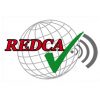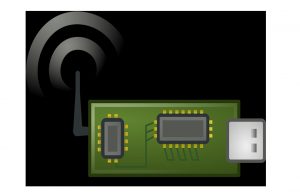 The government has today (21 January 2018) announced the creation of a new national oversight body tasked with identifying consumer risks and managing responses to large-scale product recalls and repairs.
The government has today (21 January 2018) announced the creation of a new national oversight body tasked with identifying consumer risks and managing responses to large-scale product recalls and repairs.
The new Office for Product Safety and Standards will enable the UK to meet the evolving challenges of product safety by responding to expanding international trade, the growth in online shopping and the increasing rate of product innovation.
Today’s announcement comes as part of the government’s response to the Working Group on Product Recalls and Safety. Established in October 2016 by former Consumer Minister Margot James, the group of product and fire safety experts was brought together to build on the recommendations made by Lynn Faulds Wood in her independent review into consumer product recalls.
In addition to providing support and advice for local authority Trading Standards teams, the office will co-ordinate work across local authorities where action is needed on a national scale and will ensure the UK continues to carry out appropriate border checks on imported products once the UK leaves the European Union.
Business Minister Andrew Griffiths said:
The new Office for Product Safety and Standards will strengthen the UK’s already tough product safety regime and will allow consumers to continue to buy secure in the knowledge there is an effective system in place if products need to be repaired or replaced.
I thank the working group for their efforts to help improve product safety and I look forward to working with them in this new phase.
Neil Gibbins, Chair of the working group, said:
It has been my mission to make the public safe since I joined the fire service nearly 40 years ago. That’s why I’m pleased to see the government respond to our recommendations with concrete steps to ensure the safety of consumers, now and in the future.
The government will continue to work with stakeholders such as consumer groups, manufacturers and retailers to ensure the office coordinates the UK’s product safety regime as effectively as possible.
This will not lessen any of the legal responsibilities that sit with manufacturers, importers and retailers to present safe products to the market, and to take rapid effective action when safety issues arise with their products.
Other actions as part of the government’s response to the working group include:
- working with the British Standards Institution to provide guidance on product recalls and corrective action
- conducting research to help manufacturers and retailers develop technological solutions to product marking and identification
- increasing the reach of Primary Authority to further share business, local authority and Department for Business, Energy and Industrial Strategy (BEIS) expertise to help protect consumers
- researching consumer behaviour to identify the best way to drive up the number of consumers registering appliances with manufacturers
- creating an expert panel to bring together trade associations, consumer and enforcement representatives to advise on product safety issues as they arise
Notes for editors
- The office will be based in the Department for Business, Energy and Industrial Strategy (BEIS) and will start work immediately.
- It will work closely with the BEIS Chief Scientific Advisor, Professor John Loughhead, to ensure it has access to cutting-edge scientific and technical expertise.
- The Working Group on Product Recalls and Safety was set up by former Consumer Minister Margot James to provide recommendations to improve the recalls process and the safety of consumer products. The group published its report in July 2017.
- The Office for Product Safety and Standards will cover general (non-food) consumer product safety. It will not cover vehicles, medicines and medical devices, or workplace equipment, which are already covered by other agencies. This remit is in line with the current responsibilities of BEIS on product safety.
- The remit of the office does not cover construction products, which are currently subject to a separate review being led by Dame Judith Hackitt. The government will carefully consider the recommendations of that review when it concludes.
- The Office for Product Safety and Standards will have a budget of around £12 million per year when fully operational.
- There are no changes to the roles and responsibilities of local authorities or other market surveillance authorities. The office will provide a number of specialist services centrally to support consistent national enforcement, including aspects of product testing and technical expertise.
- Primary Authority enables businesses to form a legal partnership with one local authority, which then provides assured and tailored advice on complying with environmental health, trading standards or fire safety regulations that other local regulators must respect.
Link to original article on gov.co.uk https://www.gov.uk/government/news/government-launches-new-office-for-product-safety-and-standards






 The REDCA have released a useful document outlining how to define a radio module with respect to the Radio Equipment Directive 2014/53/EU.
The REDCA have released a useful document outlining how to define a radio module with respect to the Radio Equipment Directive 2014/53/EU.